44 labels and selectors in kubernetes
Labels and Selectors - Kubernetes The label selector is the core grouping primitive in Kubernetes. The API currently supports two types of selectors: equality-based and set-based . A label selector can be made of multiple requirements which are comma-separated. In the case of multiple requirements, all must be satisfied so the comma separator acts as a logical AND ( &&) operator. Configuration | Prometheus Prometheus is configured via command-line flags and a configuration file. While the command-line flags configure immutable system parameters (such as storage locations, amount of data to keep on disk and in memory, etc.), the configuration file defines everything related to scraping jobs and their instances, as well as which rule files to load.
Kubernetes Core Concepts - Labels, Selectors and Annotations What are Selectors in Kubernetes? Selectors are used to filter out objects based on their assigned Labels. Labels and Selectors goes hand in hand. For example Selectors will help us filter out objects like give all the application pods which are of type staging. Example syntax to define Selectors
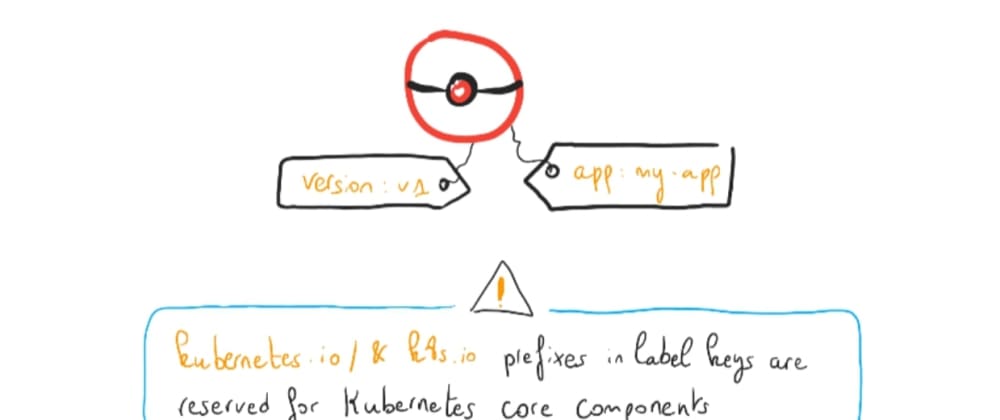
Labels and selectors in kubernetes
Kubernetes - Labels & Selectors - tutorialspoint.com Labels selector are core grouping primitive in Kubernetes. They are used by the users to select a set of objects. Kubernetes API currently supports two type of selectors − Equality-based selectors Set-based selectors Equality-based Selectors They allow filtering by key and value. Matching objects should satisfy all the specified labels. Understanding Labels, Selectors and Annotations in Kubernetes There are two kinds of selectors. Equality-based and Set-based selectors. Equality-based requirement Equality based selectors help you filter resources equal to a certain key and value. You would following operators for equality based-requirements: = == != Example # this command would give us all resources with the env =prod label Kubernetes Labels 和 Selectors _ Kubernetes(K8S)中文文档 ... Labels选择器. 与Name和UID 不同,标签不需要有唯一性。一般来说,我们期望许多对象具有相同的标签。 通过标签选择器(Labels Selectors),客户端/用户 能方便辨识出一组对象。标签选择器是kubernetes中核心的组成部分。
Labels and selectors in kubernetes. Node Selectors in Kubernetes. nodeSelector is the simplest ... Jan 15, 2022 · To achieve this goal, Kubernetes provides 2 methods: NodeSelector; Node Affinity; Let’s Discuss NodeSelector: nodeSelector is the simplest form of node selection. It is a field PodSpec and specifies a map of key-value pairs. For the Pod to be eligible to run on a node, the node must have the key-value pairs as labels attached to them. Assigning Pods to Nodes | Kubernetes Jul 17, 2022 · Pods are namespaced objects in Kubernetes, so Pod labels also implicitly have namespaces. Any label selectors for Pod labels should specify the namespaces in which Kubernetes should look for those labels. You express the topology domain (X) using a topologyKey, which is the key for the node label that the system uses to denote the domain. Field Selectors | Kubernetes May 26, 2021 · Field selectors let you select Kubernetes resources based on the value of one or more resource fields. Here are some examples of field selector queries: metadata.name=my-service metadata.namespace!=default status.phase=Pending This kubectl command selects all Pods for which the value of the status.phase field is Running: kubectl get pods --field-selector status.phase=Running Note: Field ... Kubernetes Label Selector And Field Selector - Medium Labels are key value pairs that can be used to identify, or group the resources in Kubernetes. In other words, labels can be used to select resources from a list. You can label Kubernetes native...
10.3 Filtering objects with label selectors - GitHub Pages 10.3.2 Utilizing label selectors within Kubernetes API objects. You've learned how to use labels and selectors with kubectl to organize your objects and filter them, but selectors are also used within Kubernetes API objects. For example, you can specify a node selector in each Pod object to specify which nodes the pod can be scheduled to. Labels and Selectors - Kubernetes The label selector is the core grouping primitive in Kubernetes. The API currently supports two types of selectors: equality-basedand set-based. A label selector can be made of multiple requirementswhich are comma-separated. In the case of multiple requirements, all must be satisfied so the comma separator acts as a logical AND(&&) operator. A Kubernetes Guide for Labels and Selectors | Datree.io Labels can be used by both Kubernetes and homo-sapiens to organize and to select subsets of objects. When dealing with Kubernetes config files, labels are always added under the "metadata" section of the manifest. Labels vs annotations Annotations are also key-value pairs that are attached to objects and are used to describe Kubernetes resources. What is the difference between Label and Selector in kubernetes? Labels can be used to organize and to select subsets of objects. Via a label selector, the client/user can identify a set of objects. The label selector is the core grouping primitive in Kubernetes. In a nutshell label selectors depend on labels to select a group of resources such as pods.
Working with labels and selectors | Kubernetes Cookbook - Second Edition Setting up the Kubernetes cluster on Linux via Ansible (kubespray) Running your first container in Kubernetes; 3. Walking through Kubernetes Concepts. ... Label selectors are used to query objects with labels of the following types: Equality-based: Use equal (= or ==) or not-equal (!=) operators; Set-based: Labels and Selectors in Kubernetes - howtoforge.com To get Pods matching a label of our choice, we can "--selector" in the command as follows. kubectl get pods --selector environment=test kubectl get pods --selector app=nginx We can also use "-l" instead of "--selector" to get the Pods matching the label of our choice. kubectl get pods -l environment=test kubectl get pods -l environment=prod Civo Academy - Learn about pod labels and selectors - Civo.com Now, labels are defined in the metadata section. So there is a field called label and is the location where the labels are written. What are pod selectors? Now, another part where labels are used is the Selector Section. So there's a field called selectors in most of the Kubernetes objects, so they select on the basis of the labels. So, for ... Kubernetes Matchlabels - Linux Hint Within Kubernetes, labels are a key/value formatted piece of metadata linked to an object. Additional information about the thing relevant to the consumer or object is provided via labels. ... The selector tag can be seen here, which deployment utilises to communicate with its pods. The Deployment's selector field specifies how it determines ...
Labels - Unofficial Kubernetes - Read the Docs The kubernetes.io/ prefix is reserved for Kubernetes core components. Valid label values must be 63 characters or less and must be empty or begin and end with an alphanumeric character ... Labels selectors for both objects are defined in json or yaml files using maps, and only equality-based requirement selectors are supported: "selector ...
Kubernetes Selector | How does Selector Works in Kubernetes? - EDUCBA Label Selector. We apply labels to the Kubernetes objects to organize or select a group of objects. Labels can be attached at creation time or added and modified at any time. Labels are case sensitive. We can use Label Selector using the option '-l'. Let's create three pods with labels "env: prod" and "app: nginx-web" and two pods ...
The Purpose of Labels and Selectors in Kubernetes The Purpose of Labels and Selectors in Kubernetes Logically isolate and group objects inside of Kubernetes with loose coupling. Justin VanWinkle Jan 15, 2021 • 1 min read In short, labels are a way to group and reference an object. For instance, you could group all APIs with a label like type: api.
Labels and Selectors — Kubernetes on AWS 0.1 documentation Labels and Selectors ¶ Labels are key/value pairs that are attached to Kubernetes objects, such as pods (this is usually done indirectly via deployments). Labels are intended to be used to specify identifying attributes of objects that are meaningful and relevant to users. Labels can be used to organize and to select subsets of objects.
Kubernetes: Usage and Understanding of Kubernetes Labels ... - Medium Labels are key/value pairs that are attached to objects, such as pods. Labels are intended to be used to specify identifying attributes of objects that are meaningful and relevant to users. Labels can be attached to objects at creation time and subsequently added and modified at any time Each object can have a set of key/value labels defined.
Kubernetes Labels, Selectors, and Annotations | Getting Started - ContainIQ As their name suggests, label selectors allow you to identify the objects you have tagged with particular labels. Label selectors can either be equality-based or set-based. Equality-based label selectors work by specifying an exact value that you want to match against.
Kubernetes Labels & Selectors - Kubernetes - Wisdom Jobs Selectors. Labels do not offer individuality. In overall, we can say numerous objects can carry the same labels. Labels selector are core grouping primitive in Kubernetes. They are used by the users to choose a set of objects. Kubernetes API currently supports two type of selectors −. Equality-based selectors; Set-based selectors; Equality ...
Kubernetes labels, selectors & annotations with examples Labels are attached to Kubernetes objects and are simple key: value pairs. You will see them on pods, replication controllers, replica sets, services, and so on.
Kubernetes, Labels and Selectors - Automated Ramblings The replica controller could only find 3 pods running using the matchLabel selector after we changing the run label on pod web-internal-6b444b6dd9-kd8w2 and deployed another pod to remediate the issue. Labels and selectors have many additional uses to the one covered in this post; they are a core part of the Kubernetes platform.
Kubernetes Labels, Selectors, and Annotations - vpundit.com Kubernetes Labels, Selectors, and Annotations. The use of metadata tags attached to various resources and objects is a requirement for any Kubernetes environment. It can help DevOps teams to solve several problems. DevOps teams can more quickly troubleshoot issues along the application development pipeline, apply configuration changes in bulk ...
Labels and Selectors | Kubernetes Aug 09, 2022 · Labels are key/value pairs that are attached to objects, such as pods. Labels are intended to be used to specify identifying attributes of objects that are meaningful and relevant to users, but do not directly imply semantics to the core system. Labels can be used to organize and to select subsets of objects. Labels can be attached to objects at creation time and subsequently added and ...
Using Kubernetes Annotations, Labels, and Selectors - How-To Geek Annotations, labels, and selectors are used to manage metadata attached to your Kubernetes objects. Annotations and labels define the data while selectors provide a way to query it. Here are the differences between the three concepts, what they're designed for, and how you can use them to manage your resources. Annotations
Learn Kubernetes Labels By Following Examples | Densify Using labels and selectors is also common in advanced Kubernetes scheduling. Examples of advanced K8s scheduling include node selector and pod affinity. If you need to place a pod on a specific node, you can label the node and then use the label in your pod deployment manifest. For example, you can use this command to label a node with SSD storage.
The Guide to Kubernetes Labels 2. Know the Label Selection Methods. Kubernetes provides two ways of selecting objects with labels: equality and set-based selectors. Equality: You can select objects which are equal or not equal to one or more label values. You can have multiple selectors separated by commas, and all conditions must be met for a resource to match this selector.
Pod Lifecycle | Kubernetes Oct 05, 2022 · This page describes the lifecycle of a Pod. Pods follow a defined lifecycle, starting in the Pending phase, moving through Running if at least one of its primary containers starts OK, and then through either the Succeeded or Failed phases depending on whether any container in the Pod terminated in failure. Whilst a Pod is running, the kubelet is able to restart containers to handle some kind ...
How to Provision Node Labels and Selectors in Kubernetes? (K8s) Labels selectors are core grouping primitive in Kubernetes. They are used by the users to select a set of objects. Kubernetes API currently supports two types of selectors − Equality-based...
Kubernetes Labels 和 Selectors _ Kubernetes(K8S)中文文档 ... Labels选择器. 与Name和UID 不同,标签不需要有唯一性。一般来说,我们期望许多对象具有相同的标签。 通过标签选择器(Labels Selectors),客户端/用户 能方便辨识出一组对象。标签选择器是kubernetes中核心的组成部分。
Understanding Labels, Selectors and Annotations in Kubernetes There are two kinds of selectors. Equality-based and Set-based selectors. Equality-based requirement Equality based selectors help you filter resources equal to a certain key and value. You would following operators for equality based-requirements: = == != Example # this command would give us all resources with the env =prod label
Kubernetes - Labels & Selectors - tutorialspoint.com Labels selector are core grouping primitive in Kubernetes. They are used by the users to select a set of objects. Kubernetes API currently supports two type of selectors − Equality-based selectors Set-based selectors Equality-based Selectors They allow filtering by key and value. Matching objects should satisfy all the specified labels.

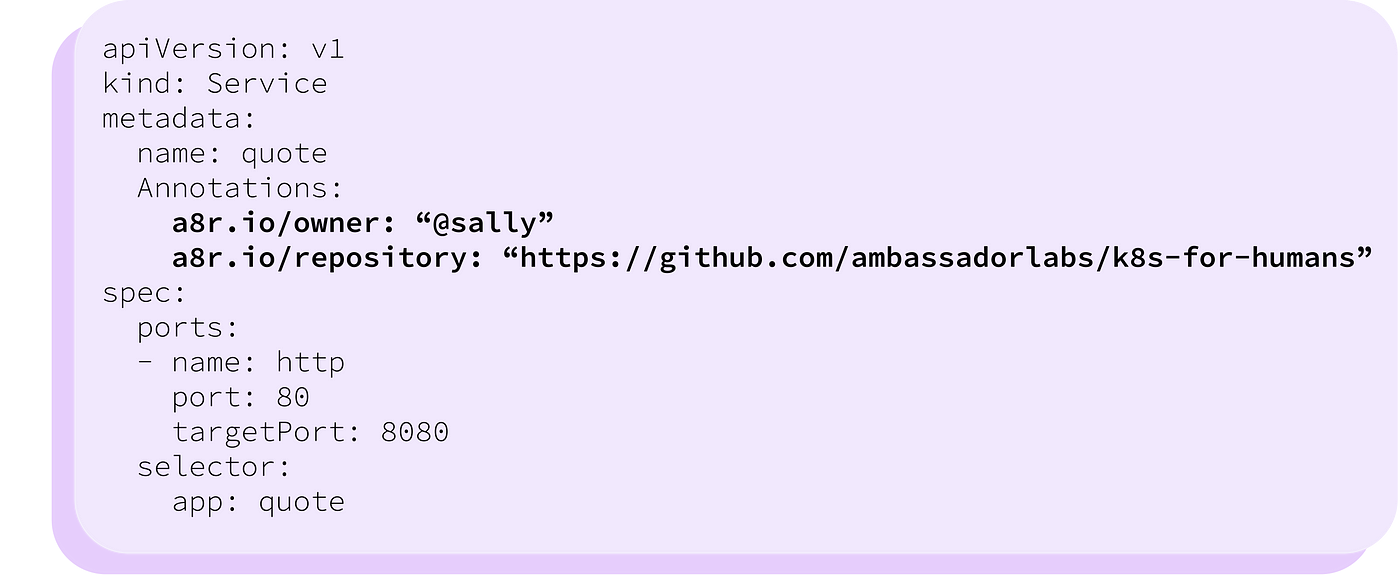






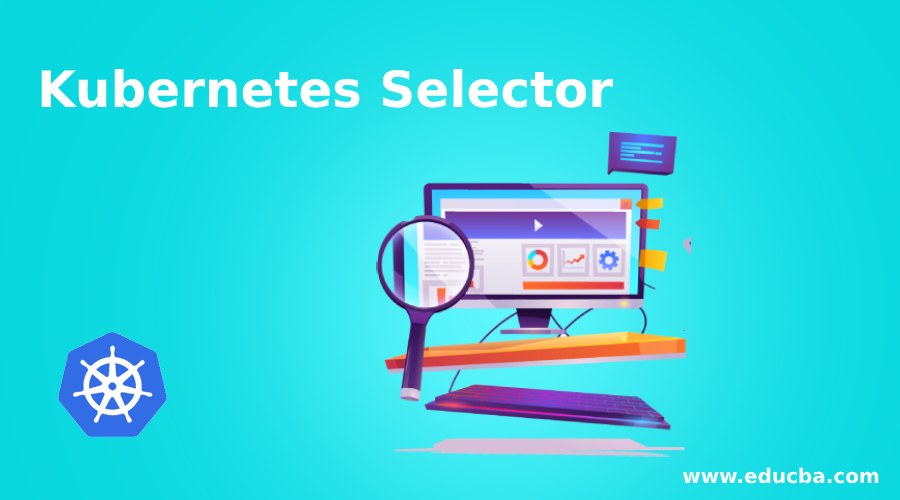

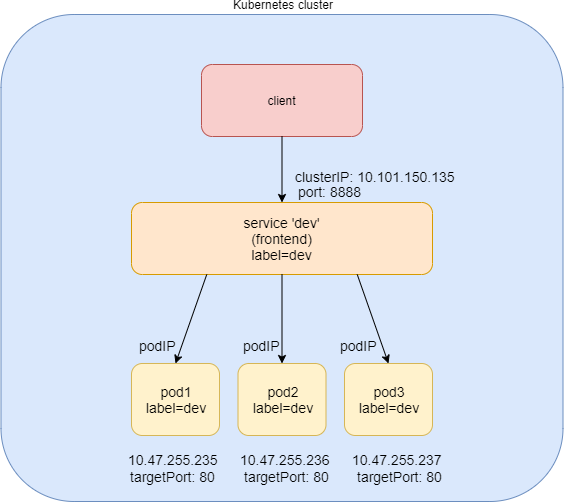
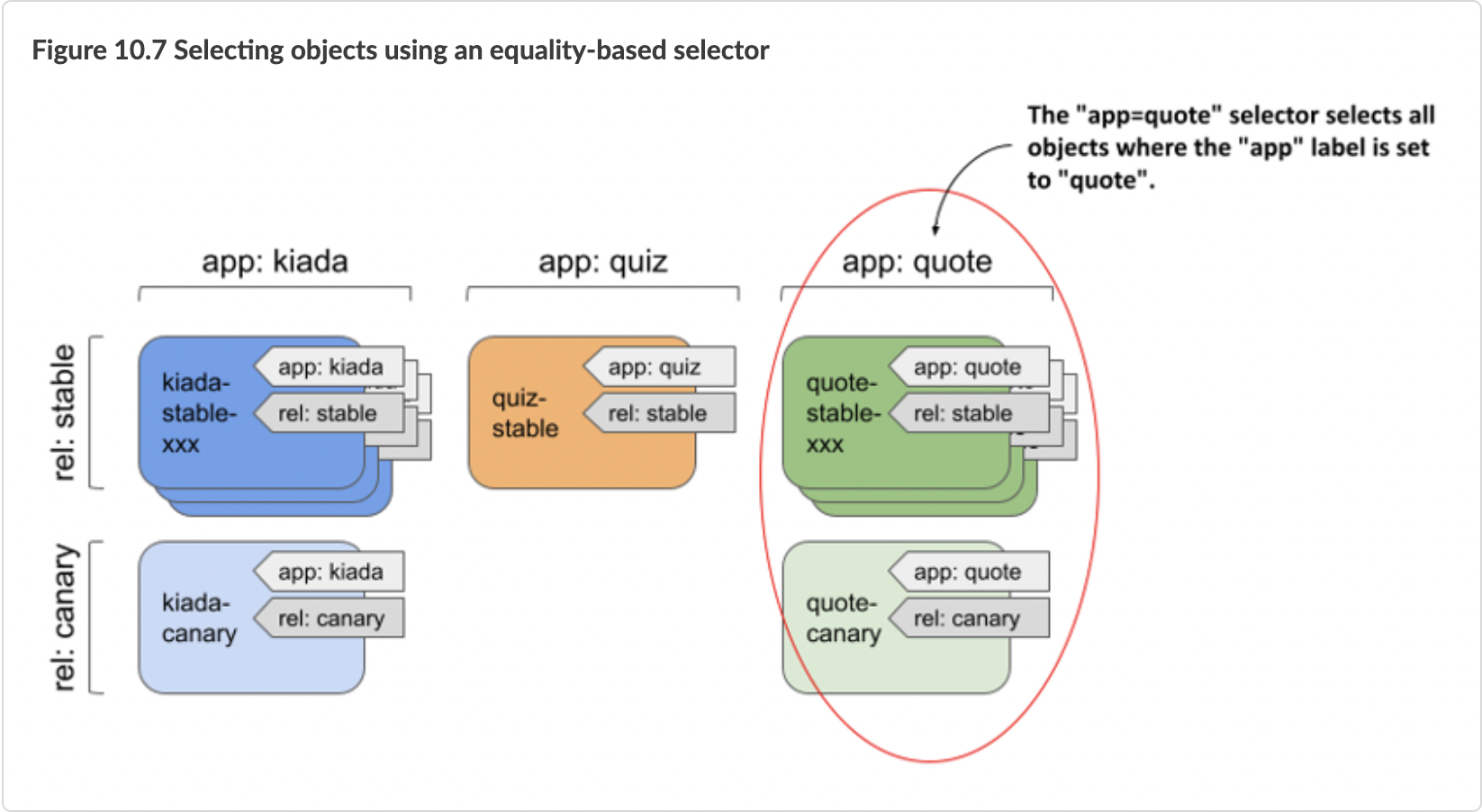
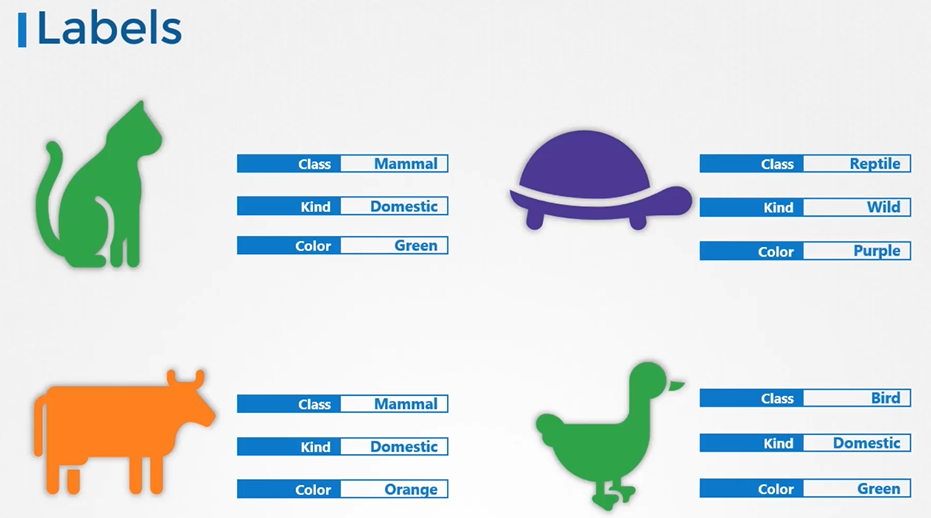

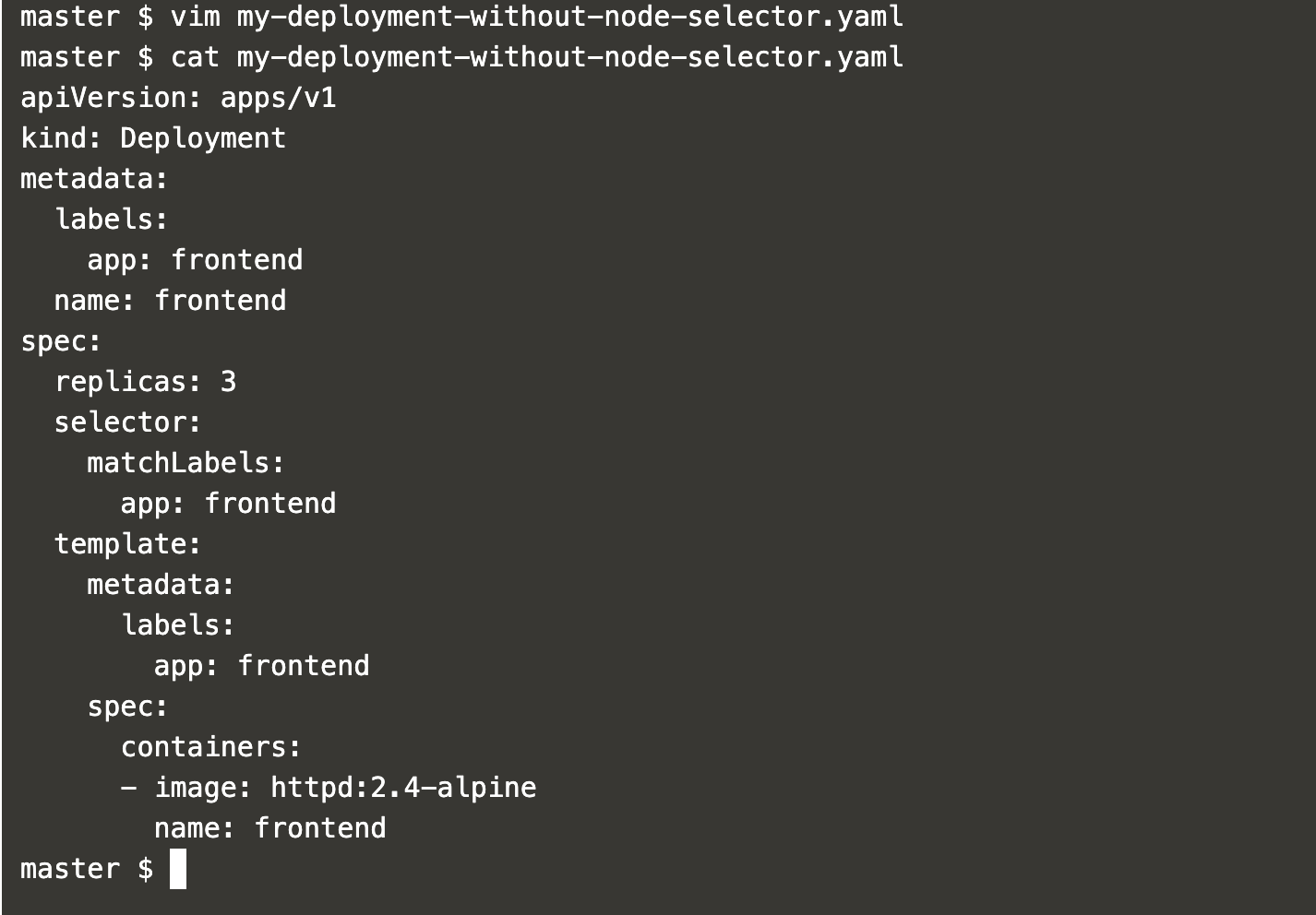
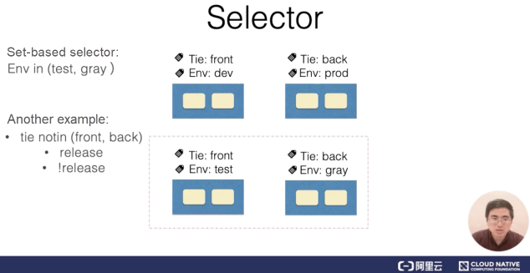

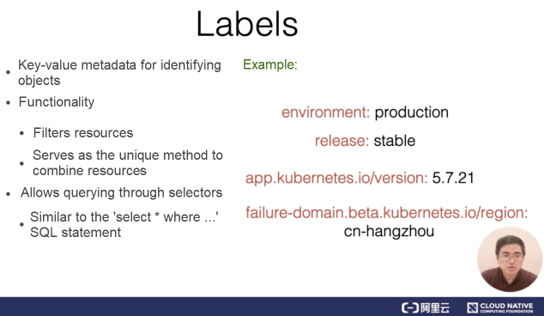



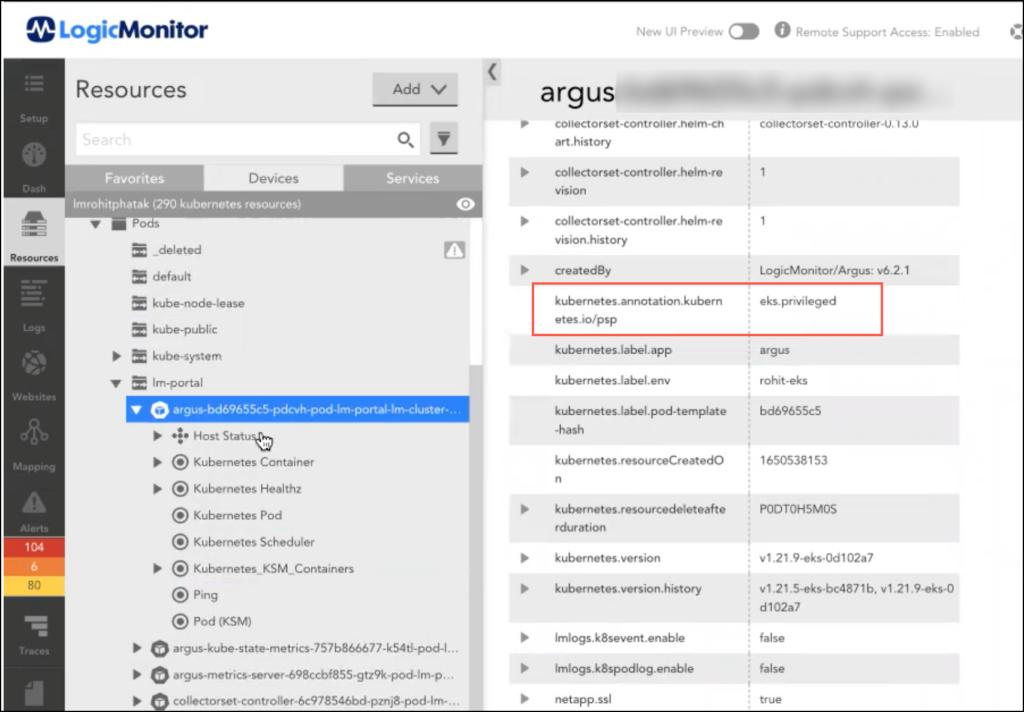

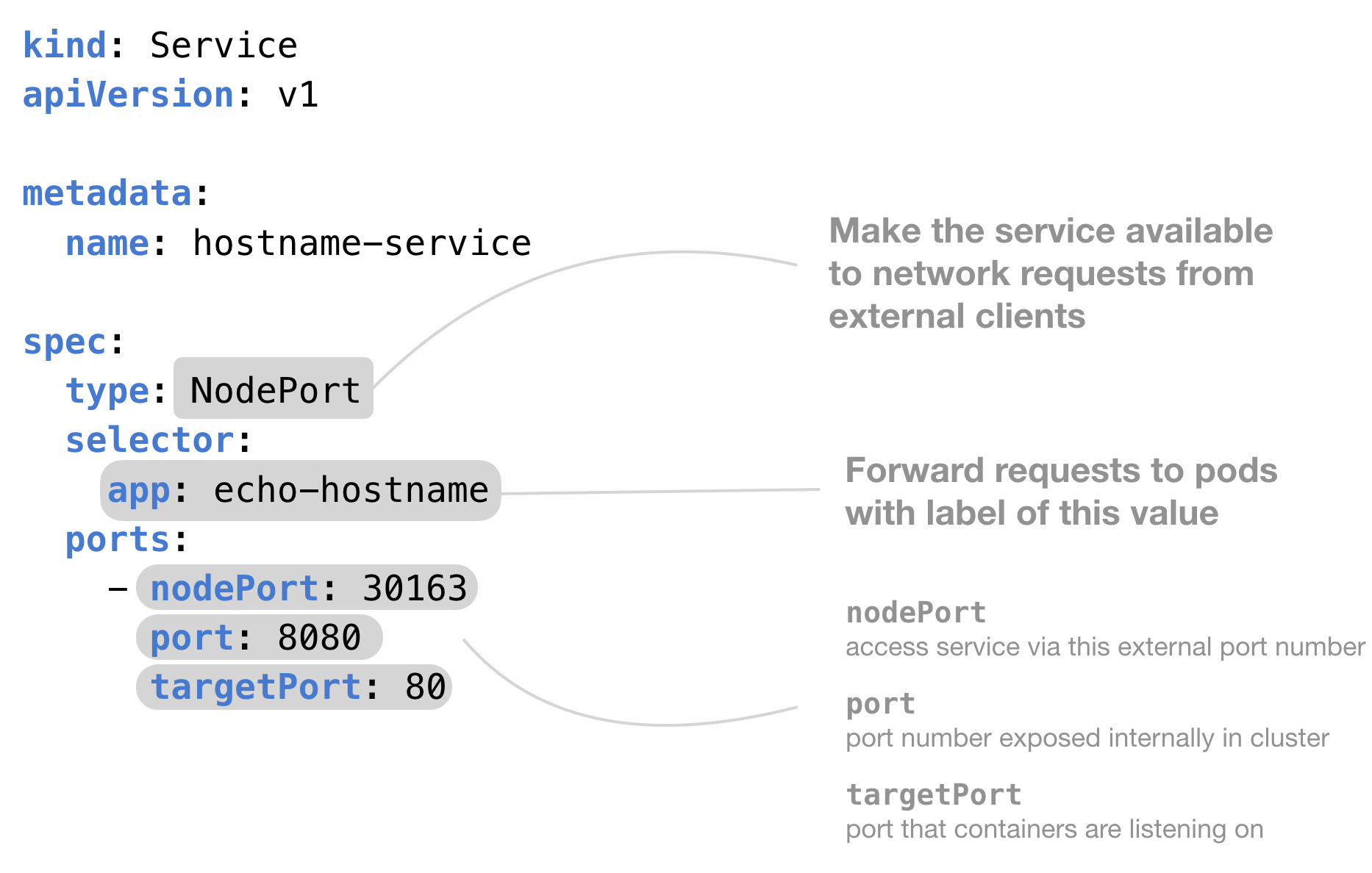


.jpeg)

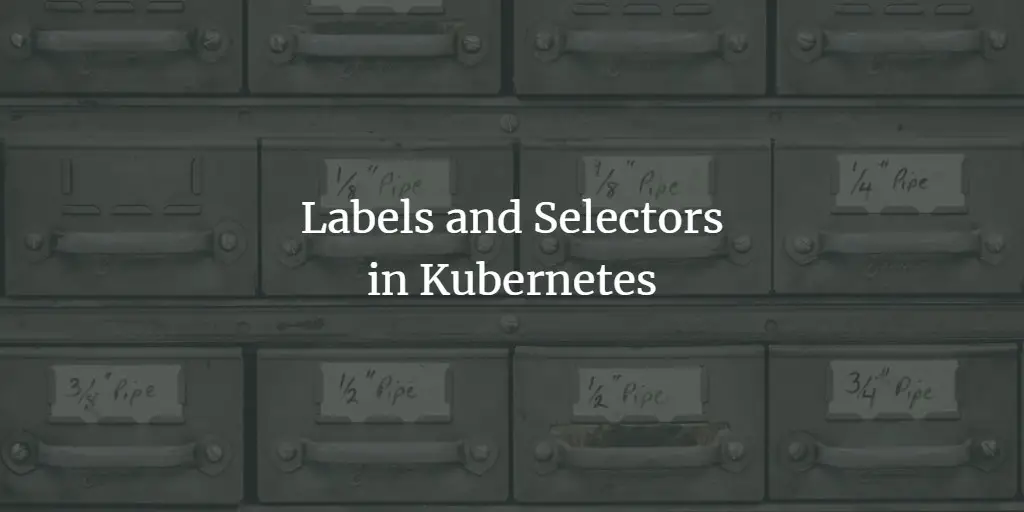


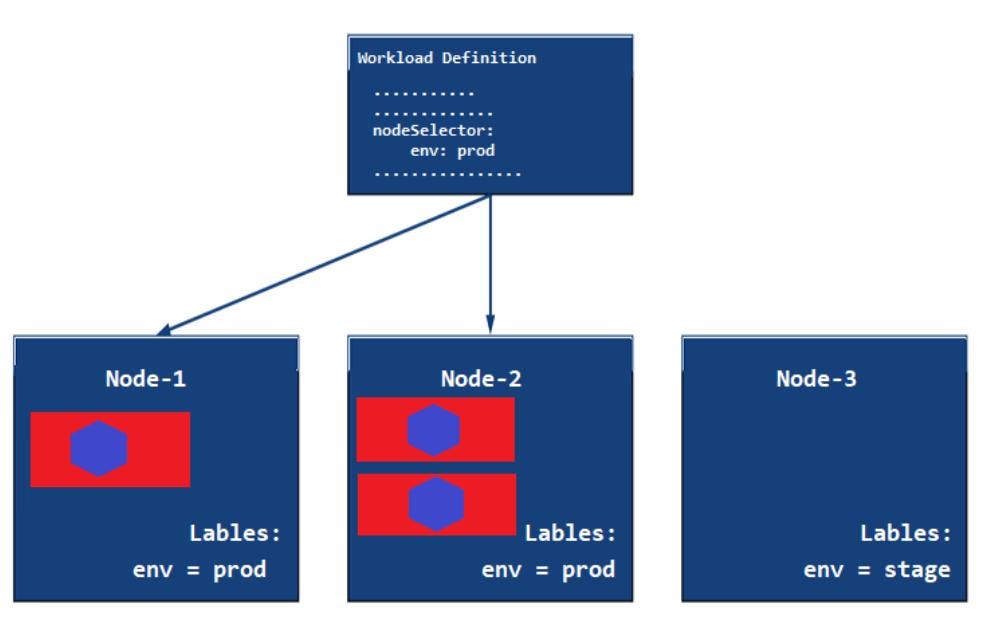
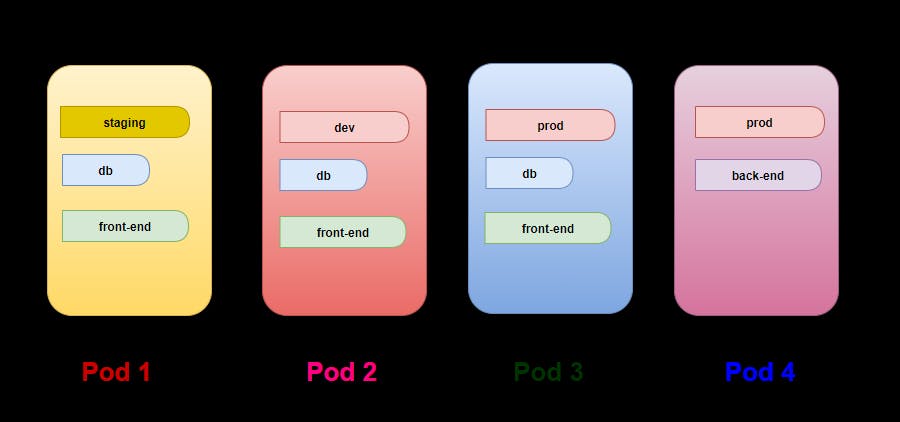
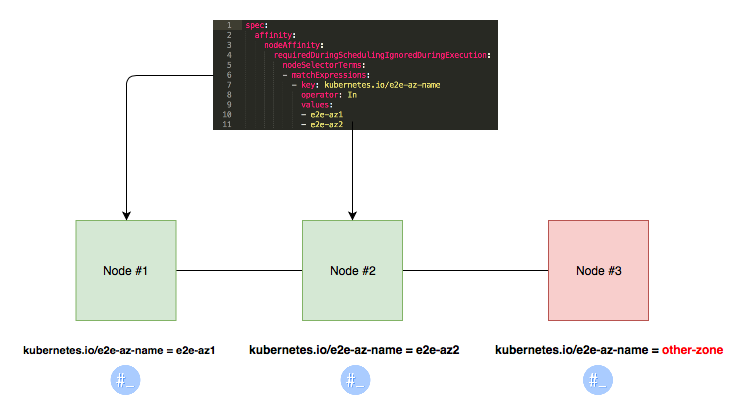



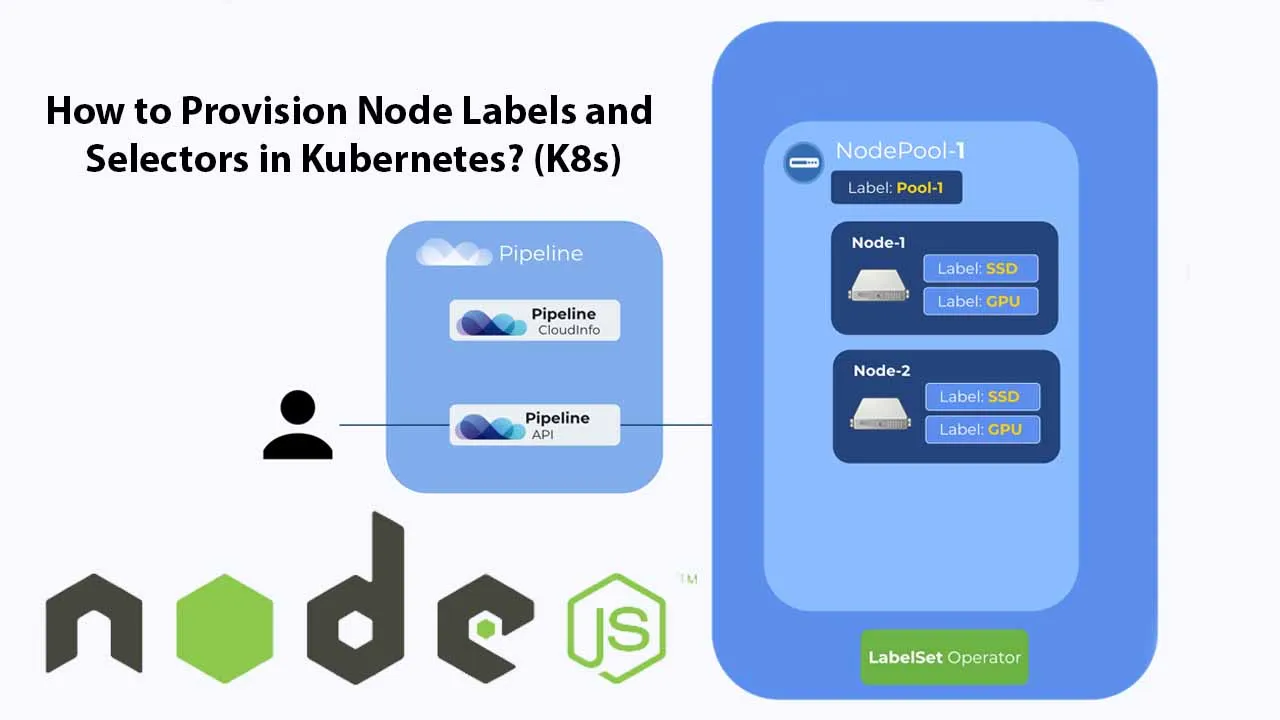


Watch horror movies online like never before with GeoFlixzPlus! Dive into a spine-chilling collection of terrifying classics and modern-day nightmares, all available to stream anytime, anywhere. Get ready for an edge-of-your-seat experience that will leave you craving more.
ReplyDelete